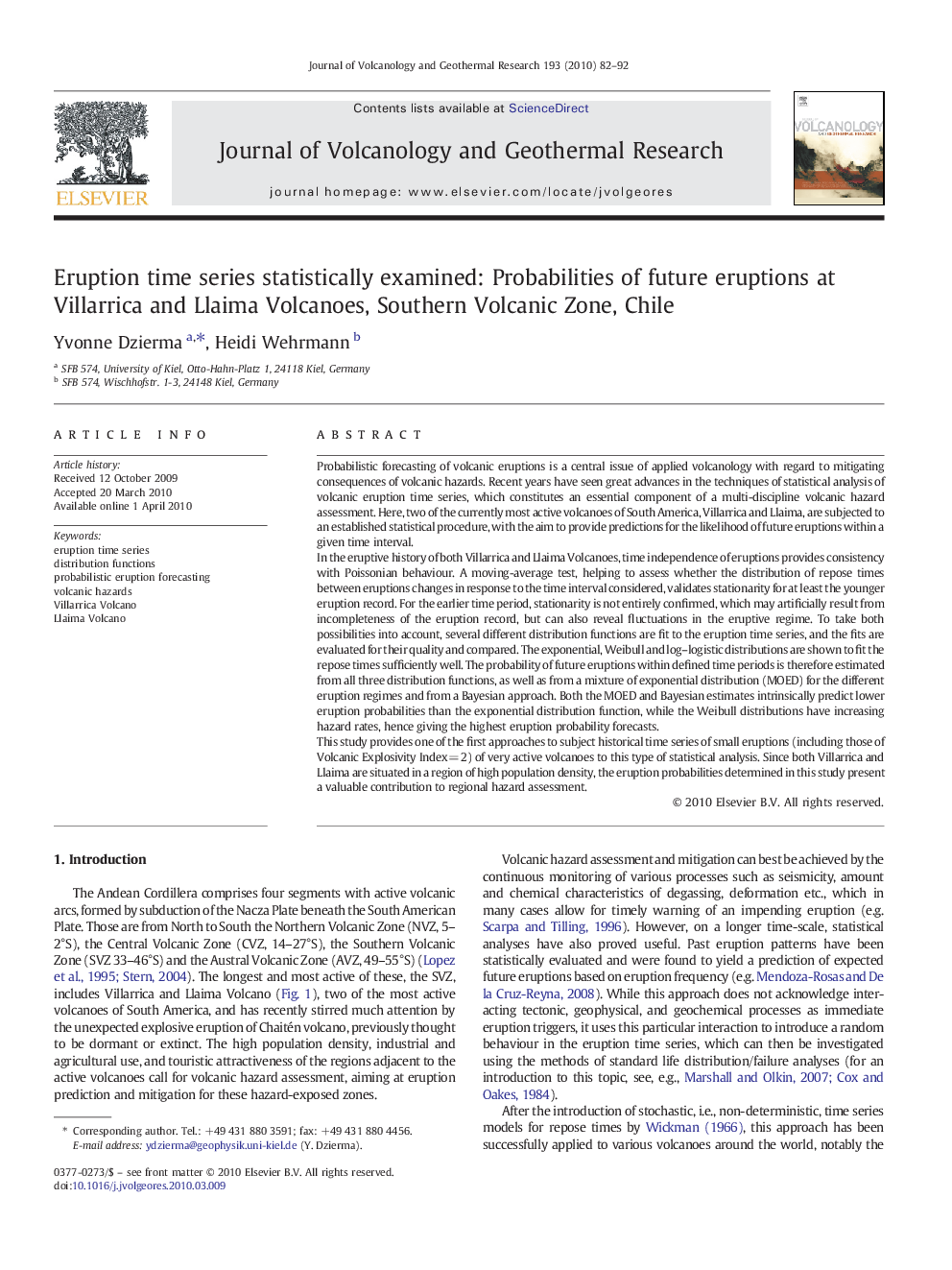| کد مقاله | کد نشریه | سال انتشار | مقاله انگلیسی | نسخه تمام متن |
|---|---|---|---|---|
| 4713021 | 1638419 | 2010 | 11 صفحه PDF | دانلود رایگان |

Probabilistic forecasting of volcanic eruptions is a central issue of applied volcanology with regard to mitigating consequences of volcanic hazards. Recent years have seen great advances in the techniques of statistical analysis of volcanic eruption time series, which constitutes an essential component of a multi-discipline volcanic hazard assessment. Here, two of the currently most active volcanoes of South America, Villarrica and Llaima, are subjected to an established statistical procedure, with the aim to provide predictions for the likelihood of future eruptions within a given time interval.In the eruptive history of both Villarrica and Llaima Volcanoes, time independence of eruptions provides consistency with Poissonian behaviour. A moving-average test, helping to assess whether the distribution of repose times between eruptions changes in response to the time interval considered, validates stationarity for at least the younger eruption record. For the earlier time period, stationarity is not entirely confirmed, which may artificially result from incompleteness of the eruption record, but can also reveal fluctuations in the eruptive regime. To take both possibilities into account, several different distribution functions are fit to the eruption time series, and the fits are evaluated for their quality and compared. The exponential, Weibull and log–logistic distributions are shown to fit the repose times sufficiently well. The probability of future eruptions within defined time periods is therefore estimated from all three distribution functions, as well as from a mixture of exponential distribution (MOED) for the different eruption regimes and from a Bayesian approach. Both the MOED and Bayesian estimates intrinsically predict lower eruption probabilities than the exponential distribution function, while the Weibull distributions have increasing hazard rates, hence giving the highest eruption probability forecasts.This study provides one of the first approaches to subject historical time series of small eruptions (including those of Volcanic Explosivity Index = 2) of very active volcanoes to this type of statistical analysis. Since both Villarrica and Llaima are situated in a region of high population density, the eruption probabilities determined in this study present a valuable contribution to regional hazard assessment.
Journal: Journal of Volcanology and Geothermal Research - Volume 193, Issues 1–2, 1 June 2010, Pages 82–92